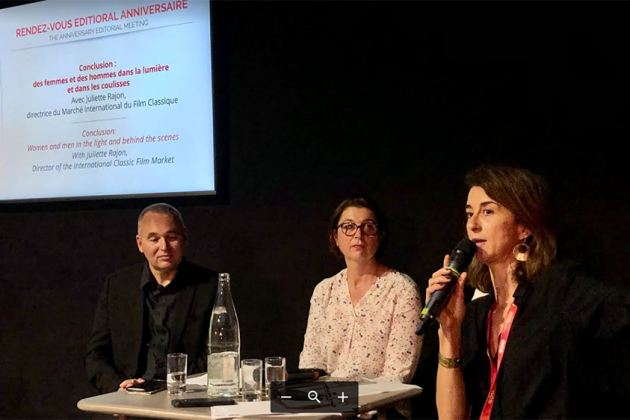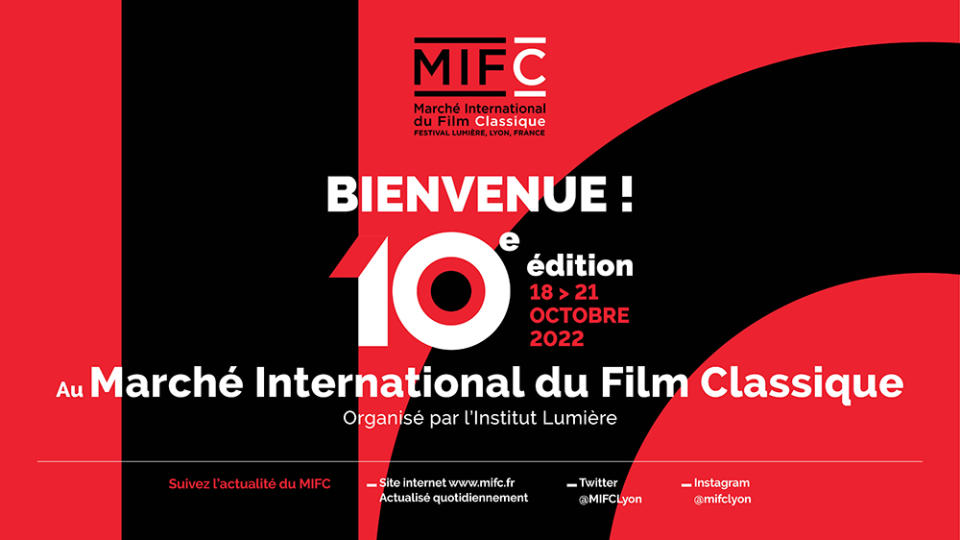Industry Growth, Streamers’ Role, Education, Forgotten Gems Key to Heritage Films’ Future
- Oops!Something went wrong.Please try again later.

Marking its tenth edition, the Lumière Festival’s International Classic Film Market (MIFC) celebrated on Tuesday with a special anniversary get-together of industry specialists to take stock and discuss the key issues facing the heritage film sector.
Guests included the festival’s director, Cannes chief Thierry Frémaux; MK2 CEO Nathanaël Karmitz; Sandra den Hamer, director of the EYE Filmmuseum in Amsterdam; Frédéric Maire, director of Cinémathèque Suisse; Davide Pozzi, director of Italian restoration company L’Immagine Ritrovata; and MIFC director Juliette Rajon.
More from Variety
Each was given five minutes to answer three questions on themes ranging from the role of streaming platforms in the distribution of classic cinema, educating younger audiences, the international distribution and availability of heritage cinema, its economic health and legislation, technical evolutions, and accessibility and sustainability.
Conclusions identified trends – such as the growth of the heritage industry – and cruxes for its future: The role of streamers, and education.
Asked whether the appetite for heritage film has grown since the first edition of the MIFC in 2013, Frémaux said that was the case, but added, “perhaps this year more than ever, the goal is not just to get people back into theatres to see old films, but to see films full stop.”
“One of the solutions to the crisis in cinema could be to take inspiration from the world of classic cinema – it’s even harder to get people back into cinemas to see old films than contemporary films. We know how to do that: we’ve had to go and get them with film libraries, cinema theaters, festivals and DVDs, so maybe distributors can take a leaf out of our book,” he said.
According to Karmitz, who launched Mk2 Curiosity during the pandemic, an AVOD platform of highly curated cinematic curiosities, which he described as “the opposite of Netflix,” the rapid emergence of streamers has radically changed the audio-visual landscape.
“There’s this fundamental paradigm shift: Our job is no longer about offer but about demand. Even though there is so much available, the offer is impoverished. Traditional mediums, like cinemas, DVDs, linear channels, are reinventing themselves and playing a central role again in nurturing the love of cinema and heritage. The streamers haven’t understood their role as curators and conveyors, the old channels need to work with these new digital tools to get people back into theaters,” he said, insisting on the importance of transmission and drawing in younger audiences.

On the matter of education and inclusion, which is central to the Lumiere Festival whose motto is “Cinema for All”, Sandra den Hamer said “at the Eye Film Museum, we believe that the education [of younger audiences] is one of our core tasks.”
With that in mind, the film museum has helped develop a curriculum aimed at children from 4 to 18 to teach them about filmmaking at school.
Regarding the role of platforms, den Hamer welcomed the opportunity they provide to reach a wider and younger audience: “During the pandemic, film libraries all developed online portals. On our Eye Film Player, we have a much bigger audience than expected, and 64% is younger than 34 years, so it’s a completely different audience than in the cinemas,” she enthused.
Frédéric Maire, who is also president of the International Federation of Film Archive (FIAF), welcomed a greater circulation and distribution of heritage film over the past decade thanks to digitalization. He also praised the work of festivals dedicated to heritage films such as Lumière and Il Cinema Ritrovata in Bologna, but he, too, insisted on streaming platforms’ responsibility in conveying film heritage.
When it comes to restoration, Maire warned against the temptation to only restore works by renowned filmmakers, easier to distribute, and celebrated the work of heritage film distributor Carlotta on promoting lesser-known directors like Kinuyo Tanaka, in collaboration with Lumière in its sidebar “A Permanent History of Women Filmmakers”.
“You need to have the courage and curiosity to go and look elsewhere for films that you don’t know. I think the public is also curious for more diversity, both on platforms and in theatres,” he said.
These thoughts were echoed by Davide Pozzi, who identified two main challenges for the film restoration industry: the responsibility of film restoration labs to identify forgotten gems in need of restoration “that may not end up in Cannes or Venice but will still find outlets on some platforms”, and the importance of maintaining the technology to safeguard film reels alongside digitization.
Wrapping up the meeting, MIFC head Juliette Rajon said the proof was in the numbers, with MIFC attendance figures rising from 100 to nearly 500 participants in a decade, most of whom are regulars who find, at the market, a dynamic and committed forum to share and discuss the challenges facing the heritage film industry.
The MIFC runs in Lyon until Oct. 21.
Best of Variety
The Best Pop Culture Halloween Costumes for 2022: From 'House of the Dragon' to 'Euphoria'
Constance Wu Gets Candid in Revealing New Memoir 'Making a Scene'
Sign up for Variety’s Newsletter. For the latest news, follow us on Facebook, Twitter, and Instagram.

